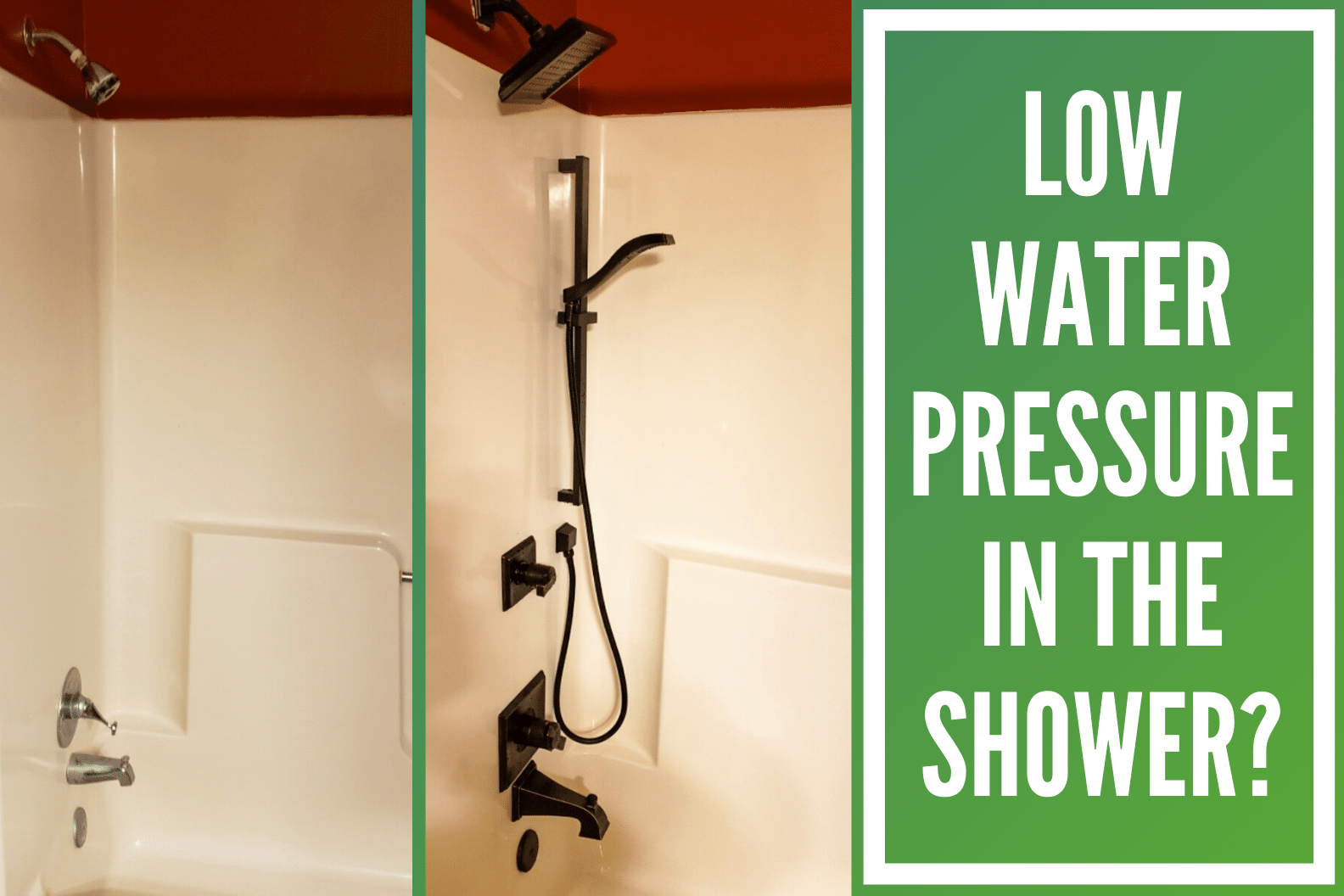Picture this: you hop in the shower after a long day in the office and are greeted with a measly trickle of water. What a let down! The only thing worse would be having no hot water at all! Nonetheless, it is in instances like this that plumbing problems can be extremely frustrating. For most homeowners, you don’t have to deal with a plumbing issue more than a few times each year. Unless you have a plumbing background, it can be tough to troubleshoot what’s wrong and how to fix it.
In this week’s blog post, we’re going to take an inside look at low water pressure in the shower. Believe it or not, but this water pressure issue can be due to a number of factors with some being more serious than others. We’ll walk you through each of these potential problem areas, as well as some basic troubleshooting practices that’ll give you a better understanding of what you’re dealing with!
With that said, let’s get started with some of the culprits of water pressure loss in the shower:
Diverter Valve
First on our list is a part called the diverter valve. In essence, a diverter valve is responsible for splitting up the water between two end-points. You can either have a diverter that switches the water between the showerhead and tub, or one that switches between the standard overhead showerhead and hand-held showerhead (pictured below).
As is the case with just about everything involved in a household’s plumbing system, it isn’t going to last forever. Particularly something used as much as the shower, it’ll eventually break down and need replaced. Unfortunately, to the typical homeowner, spotting a worn-out diverter valve is easier said than done. If you hire a licensed plumber because of water pressure issues, this will certainly be something they will monitor.
Blocked Showerhead
Luckily, one of the more common water pressure issues is also one of the easiest ones to fix! Take this situation for example: You’re experiencing low water pressure consistently, even when plenty of other faucets are in use throughout the house. In this case, you’re more than likely looking at a blocked showerhead. To resolve it, remove the showerhead (most of these can simply be unscrewed). You may see some sediment buildup that can block water from coming through. Soak it in vinegar for roughly 8 hours and then you should be able to easily push the sediment through with a toothpick or small utensil.
Still not working, keep reading…
Usage Overages
Next up, we have the opposite of the example in the previous point. Say while you’re getting a shower, the washing machine is also running, as well as the dishwasher and someone flushes a toilet too. Here we have an overage in terms of water demand. Unfortunately, the only solution for this is to not run extra water while you’re in the shower!
How Well Do You Know Your Showerhead?
We’ve touched on this topic before here on the blog. Over the years, plumbing technology has rapidly advanced and it’s led to much more efficient fixtures. One of these, of course, is the adoption of low-flow showerheads. After all, it’s a great way for homeowners to live a more sustainable life, plus it’ll even save you some on your monthly water bill!
Well, if you just moved into a home or had someone install a showerhead without paying much attention to it, you could have a water-efficient showerhead that’s not using the pressure you’re used to. Obviously, the only solution to this issue is to install a brand new showerhead. However, before doing so, we’d recommend having an experienced plumber check out the complete situation to ensure that is in fact the problem!
Only Hot Water Faucet?
This point is an easy one to break down. If you’re only experiencing water pressure issues with the hot water faucet, you’re likely looking at a malfunctioning hot water heater. Due to the safety challenges associated with water heaters, leave this repair up to a licensed plumber.
Water Meter Shut-Off Valve
Sometimes, fixing household plumbing problems is as simple as just knowing what to look for. Any issue with the water main can easily cause water pressure issues. For example, if the water meter shut-off valve isn’t turned completely to “open,” it won’t maximize the water flow. It’s as simple as that. Some other similar issues on the topic include a water main that’s leaking or even an equipment malfunction. The key point to remember here is that these types of issues will likely affect water usage throughout the entire house, not just the shower.
Hard Water
Here in the Kansas City area, we do suffer from above-average levels of hard water. We’ve covered this topic in-depth before here on the blog. The key takeaway is that hard water is still safe to drink and wash with, but it does certainly have some negative side effects affecting your day-to-day life. Hard water is essentially water with higher than normal mineral content.
Hard water can be capable of causing unexpected clogs thanks to this mineral build-up. The easiest way to resolve this issue is with the help of a water softener. If possible, avoid turning a water softener installation into a DIY project. Professional water treatment companies are going to be capable of correctly evaluating your individual situation and make the correct recommendations moving forward!
Pipe Leak
If you’ve made it this far down the list and still don’t have a culprit, chances are you’re looking at a serious issue and that is a broken pipe. Even if it’s not a severe leak, this is not something to mess around with and we strongly recommend getting a trained plumbing technician out ASAP. Simply put, as water makes its way to your various fixtures, a leak is going to cause some of this water to escape, hence the low pressure! Luckily, with as advanced as the video inspection technology is nowadays, your plumber will be able to spot the exact areas where the leak is present.
That covers all of the most popular causes of low water pressure in the shower! While every plumbing issue is capable of coming with its own unique twist, this certainly accounts for the bulk of them. Unless it’s an issue solely in regards to the showerhead itself, we recommend leaving the rest to an experienced plumber. They’ll be able to walk through the entire process and accurately decipher where the issues are at!
Get Your Shower Back in Working Order!
As seen throughout this blog, low water pressure in the shower can be the result of a variety of different plumbing issues. Some severe and requiring significant repairs, while others can be fixed in under an hour. Just remember, if the issue is solely with the showerhead and nothing else in the home, it’s typically a fixture issue.
Here at Stine-Nichols Plumbing, we’re proud to have had the opportunity to serve fellow Kansas City homeowners since 2014. There’s nothing better than a relaxing shower or bath! Our team is here to assist with everything from bathroom renovations to general repairs and maintenance. To get started, feel free to give our team a call at (816) 348-3481 or fill out the FREE QUOTE form. We serve the entire Kansas City community, including many of the surrounding cities. Overland Park, Lenexa, Liberty, Parkville, Lee’s Summit, you name it! We look forward to working with you!
Want to save a few bucks on your next plumbing repair? Be sure to check out our coupons page before scheduling your next service. We always make sure to have a handful of specials to ensure our customers get the best deals in town!


